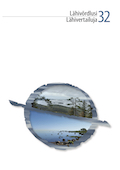Kuidas õpetada eesti keele kui teise keele grammatikat põhikooli õpilastele? Juhtumianalüüs
How to teach the grammar of Estonian as a second language to basic school students? Case study
Author(s): Mare Kitsnik, Jelizaveta KrombergSubject(s): Syntax, Language acquisition, Finno-Ugrian studies, School education
Published by: Eesti Rakenduslingvistika Ühing (ERÜ)
Keywords: second language learning; grammar teaching; traditional approach; communicative approach; basic school; Estonian language;
Summary/Abstract: Grammar learning is an important part of formal second language learning. Effective grammar learning should be communicative, i.e. develop language learners’ ability to use grammar fluently, appropriately and flexibly in communication. The article looks for an answer to the questions: which grammar teaching techniques are used in the Estonian as a second language class in basic school and to what extent they correspond to the modern principles of communicative grammar teaching. In order to get answers, a case study has been conducted in the Estonian as a second language classes of the eighth and seventh grade study groups (n = 16) of a large school. The class observations were carried out by one of the authors of the article, who was a student at the University of Tartu at the time of the observations, on the assumption that the student’s presence in the class has the least impact on both the teacher and the students. Observations took place in four different teachers’ 45-minute classes with an average of 15 students. The observed lessons were randomly selected from the lesson plan according to times suitable for the observer and in agreement with the teacher conducting the lesson. Of the observed lessons, four were fully devoted to grammar teaching and three were partially devoted to grammar teaching. Lessons were analyzed with directed content analysis based on categories derived from the theory. The results showed that a little over a third of the total time of the observed lessons was spent on grammar. More time was spent explaining grammar than practicing. The explanations were mostly deductive, the students themselves made few discoveries about the language. Practice mostly consisted of written contextfree and artificial tasks. Grammar learning was little related to the general topics, life and sub-skills being studied. In the case of all grammatical phenomena to be studied, the focus was on their forms and, in some classes, to some extent also on their meaning. The usage function was somewhat dealt with in just one lesson. Students could not practice using the learned grammar in active natural communication in unprepared improvisational situations. There were few tasks that corresponded to the interests of basic school students. The language phenomena being studied seemed mostly affordable to the students, but the fact that students almost did not use them in communication makes it difficult to assess the actual affordability of the topics. In summary, the grammar study of the eighth and seventh grades of the school under consideration was very traditional in the lessons of Estonian as a second language, and there were very few elements of communicative grammar study. In this way, students cannot have a real sense of the meaning and usage function of the grammatical phenomena they are learning. Also, the automaticity for using grammar does not develop, and students are not able to use the grammar topics they learn fluently, situationally and flexibly in real communication. If the learning is not interesting, then the students are not absorbed in the learning, which has a negative effect on learning motivation and which reduces the effectiveness of learning. The research results cannot be generalized to Estonian as a second language classes in all basic schools in Estonia. It is an indicative study that raises important questions, which should be continued in the future on the basis of more extensive material.
Journal: Lähivőrdlusi. Lähivertailuja
- Issue Year: 2022
- Issue No: 32
- Page Range: 53-78
- Page Count: 26
- Language: Estonian

